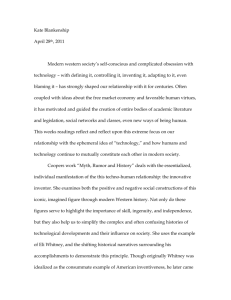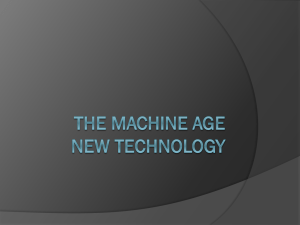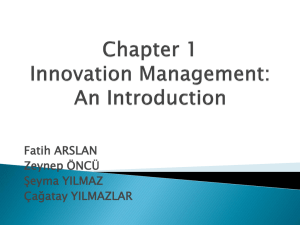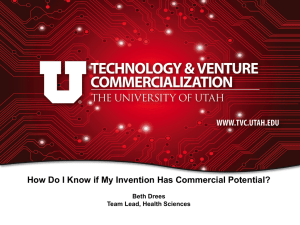Read the Joint Patent Practice Seminar Manuscript here
advertisement
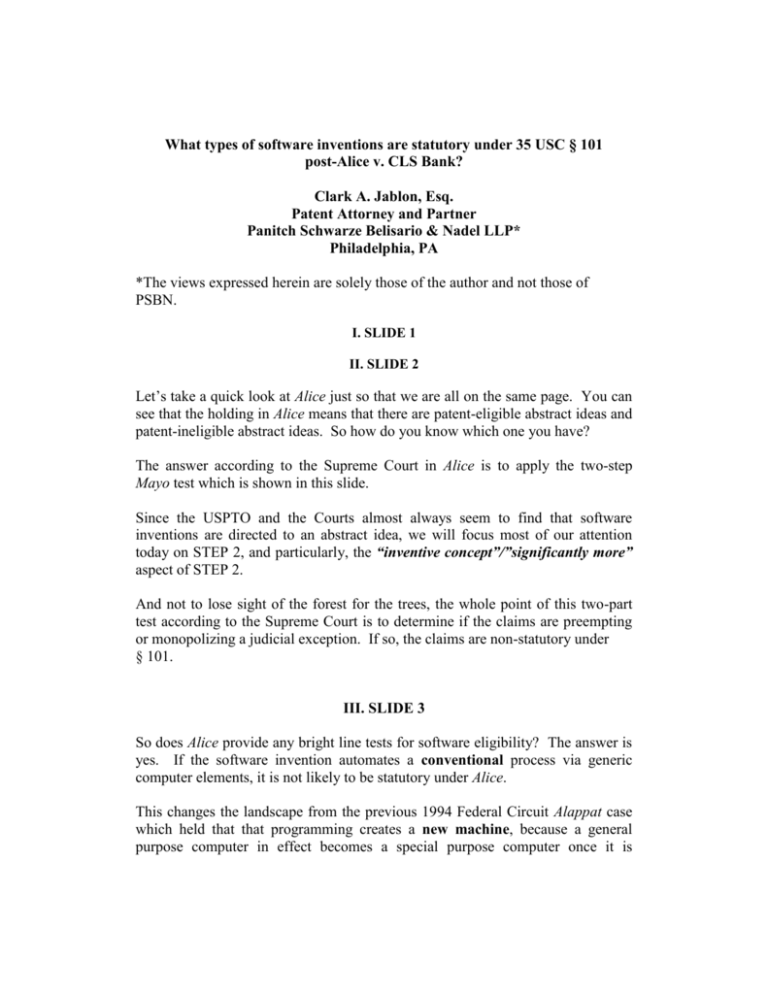
What types of software inventions are statutory under 35 USC § 101 post-Alice v. CLS Bank? Clark A. Jablon, Esq. Patent Attorney and Partner Panitch Schwarze Belisario & Nadel LLP* Philadelphia, PA *The views expressed herein are solely those of the author and not those of PSBN. I. SLIDE 1 II. SLIDE 2 Let’s take a quick look at Alice just so that we are all on the same page. You can see that the holding in Alice means that there are patent-eligible abstract ideas and patent-ineligible abstract ideas. So how do you know which one you have? The answer according to the Supreme Court in Alice is to apply the two-step Mayo test which is shown in this slide. Since the USPTO and the Courts almost always seem to find that software inventions are directed to an abstract idea, we will focus most of our attention today on STEP 2, and particularly, the “inventive concept”/”significantly more” aspect of STEP 2. And not to lose sight of the forest for the trees, the whole point of this two-part test according to the Supreme Court is to determine if the claims are preempting or monopolizing a judicial exception. If so, the claims are non-statutory under § 101. III. SLIDE 3 So does Alice provide any bright line tests for software eligibility? The answer is yes. If the software invention automates a conventional process via generic computer elements, it is not likely to be statutory under Alice. This changes the landscape from the previous 1994 Federal Circuit Alappat case which held that that programming creates a new machine, because a general purpose computer in effect becomes a special purpose computer once it is programmed to perform particular functions pursuant to instructions from program software. IV. SLIDE 4 The conventional analysis of “claims as a whole” is close to dead, at least as it related to § 101. Each claim element can now be tested for “inventiveness,” thereby conflating Section § 101 and Sections 102/103. The opinions in both Alice and Mayo endorsed this new piecemeal approach. Most practitioners believe that the Courts are also now looking for some sort of technological component for any identified inventive clauses, despite the lack of any clear endorsement of such a test in either Mayo or Alice. The painfully litigated Ultramercial patent ultimately fell victim of this new analysis. In Ultramercial, the Federal Circuit even admitted that some of the eleven claimed steps were novel, but found that they “were devoid of a concrete or tangible application.” Judge Mayer in a concurring opinion argued that Alice and Bilski can be read to endorse a technological arts test for § 101 eligibility but the majority opinion in Ultramercial couched their analysis in somewhat different terms, but still focused on the lack of a technological component in the novel steps. In both Planet Bingo and BuySafe, the Federal Circuit found that the functions performed by the computer at each step of the process are purely conventional. Thus, the claims in both Planet Bingo and BuySafe failed to meet the new clauseby-clause inventiveness test. In Digitech Image Technologies, the Federal Circuit held that the claims were invalid under § 101 because they were not tied to a specific structure or machine. The invention in Digitech was highly technological and would have likely been statutory under § 101 if claimed differently, as clearly telegraphed by the Court’s reasoning. DDR Holdings was a completely different story. In DDR Holdings, the Federal Circuit clearly analyzed the “claims as a whole,” showing that this doctrine is not completely dead. The claims in DDR Holdings were found to recite significant technological components, evidenced by these quotes: the claimed solution is necessarily rooted in computer technology to overcome a problem specifically arising in the realm of computer networks Claims represent a “specific way” of creating a composite web page “in order to solve a problem faced by websites on the Internet.” So what’s the key to writing a potentially § 101 eligible software claim? Based on the case law to date, the secret formula appears to be to recite at least one inventive clause and to tie that inventive clause to one or more technological components so that it is clear that the feature in this clause is not a human activity. V. SLIDE 5 The Office of Patent Legal Administration (OPLA) has done an extensive analysis of § 101 jurisprudence and formulated a list of six ways that a claim can potentially meet the Mayo Part 2 “significantly more” test as shown in this slide. In theory, any software invention that has overcome the prior art and is claimed with technological components should meet at least one of these tests, particularly, the 5th test, even if the technological components use generic computer elements. However, most patent practitioners have had no luck to date in relying upon the 5th test for overcoming § 101 rejections during prosecution, and litigants have not fared much better in District Court using arguments along the lines of the 5th test, despite the fact that it is fully supported by the § 101 analysis from Mayo and Alice. Most Examiners will tell you that meeting the 2nd test is the easiest way to avoid or overcome a § 101 rejection, but a large number of software inventions simply cannot meet this test no matter how they are claimed. VI. SLIDE 6 One view of the Mayo/Alice analysis as it applies to software is that once an abstract idea is identified, the only relevant inquiry is whether the computer elements that implement the identified abstract idea are generic. If so, the claim is patent-ineligible under § 101. Under this view of Alice, a software claim cannot be saved from invalidity merely by showing that it performs an inventive function. This type of analysis is the primary one being used in most District Courts with respect to software inventions. The attractiveness of this analysis is that District Courts can dispose of a significant percentage of their patent docket on summary judgment motions because no in-depth analysis of the claims is required with respect to thorny 102/103 issues. Examiners are also using this abbreviated analysis which has caused allowance rates to plummet into the low single digits in many software areas. This abbreviated analysis does not conform to OPLA’s guidance document, but Examiners are being told to follow it until more guidance is provided by new decisions. VII. SLIDE 7 If your software improves the functioning of a computer or other hardware elements, the invention should clearly be § 101 eligible. If your software invention is not of this type, it will be vulnerable to § 101 challenges at the District Court and will likely run into trouble at the USPTO if it is in the application stage. Most patent practitioners have resigned themselves to advising clients that their only viable choice right now to maintain pendency is to write up an appeal and park their application at the PTAB. If you are preparing a new software application, you’ll want to follow some of the tips in this slide. VIII. SLIDE 8 The one issue that patent practitioners are most eager to see resolved is whether novel and unobvious software inventions can be recited with generic computer structure and still pass muster under § 101, or whether such inventions will have to be limited to claiming specialized computer structure that will necessarily limit their value because of the ease in designing around the specialized computer structure. For example, will the next GOOGLE search algorithm invention, which is the one that single-handedly launched the company and which was unquestionably inventive, have to be narrowly claimed as executing on specialized computer structure, even though the invention concept lies solely in the algorithm? If so, the invention can be easily designed around by executing the algorithm on a conventional high-speed computer. We are likely to see more guidance on this issue sooner than later because there are a significant number of cases in the appeal hopper that have this fact pattern. Also, we would all like to get better guidance on STEP I of the Mayo framework but nobody is expecting that to come out anytime soon. IX. CONCLUSION Some District Courts are starting to find Defendant arguments regarding STEP 1 to be overreaching and are rejecting them outright. “Judicial Exception” conundrum (STEP 1 of Mayo) “one should “tread carefully” in applying § 101 tests because at some level, “all inventions . . . embody, use, reflect, rest upon, or apply laws of nature, natural phenomena, or abstract ideas.” Mayo and Alice “If one looks at almost any patent from far enough away, it could arguably claim an abstract idea. For example, Alexander Graham Bell's patent could be said to claim the abstract idea of oral communication. But his invention was not the concept of oral communication itself; it was a technological innovation that allowed a type of oral communication between people who could otherwise not communicate in that way.” Messaging Gateway Solutions LLC v. Amdocs, Inc. et al, 114-cv-00732 (DED April 15, 2015, Order) (Andrews, J.) SLIDE 1 SLIDE 2 SLIDE 3 SLIDE 4 SLIDE 5 SLIDE 6 SLIDE 7 SLIDE 8

